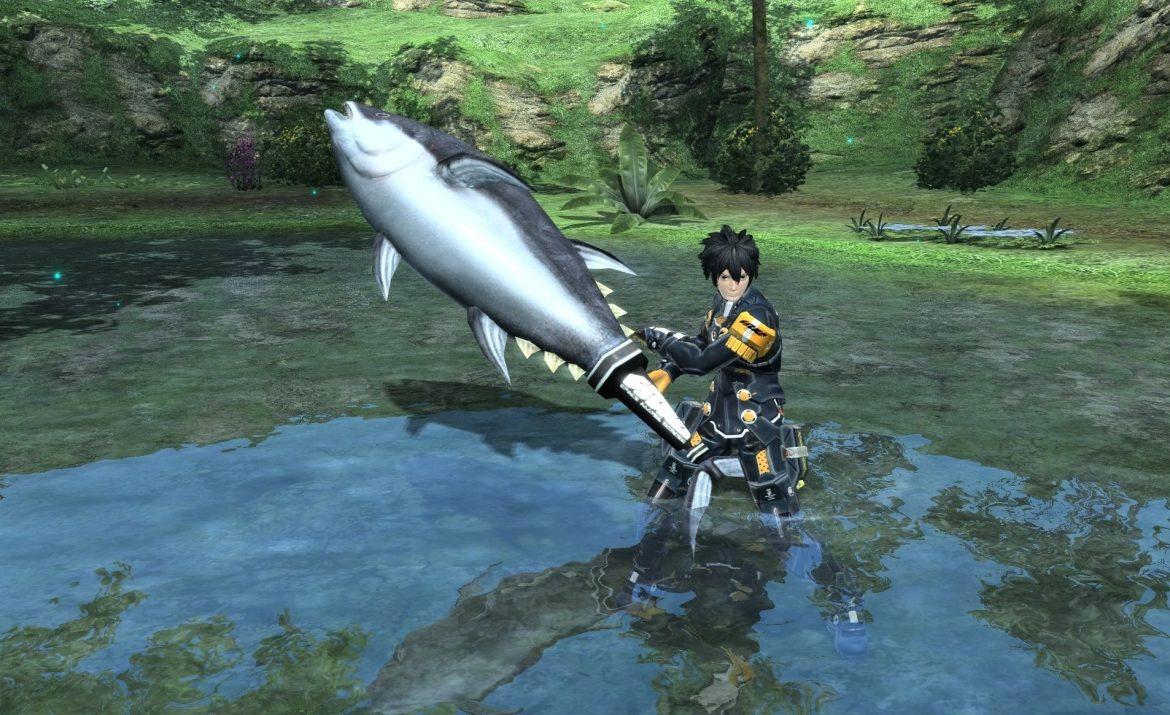Welcome back readers.
We’ve got a few updates from around the site to go through. First, the latest Keywords is up, and this episode’s guest is Florenece Smith-Nicholls. Check it out!
Next up, I just want to give a gentle heads-up that Critical Distance typically takes a week or so off somewhere around the holidays. As such, for the next two Sundays (December 25 and January 1) we’ll be taking a little break. Fear not, as the next issue when we’re back (January 8) will cover the whole three-week span in games crit.
Ok, one last thing. I have restated my gratitude to the community repeatedly over the last few weeks for helping us out of a tight financial spot. That gratitude remains, but it’s also impprtant to recognize that Critical Distance is nothing without good crit to read and curate in the first place! I’d dearly appreciate it if you sent friends-of-the-site No Escape some love this holiday, as they currently have their own campaign running to build out some cool new expansions to their mandate in 2023.
This Week in Videogame Blogging is a roundup highlighting the most important critical writing on games from the past seven days.
Industrial Zone
Our opening section this week is about industry trends, industry personalities, and pushing back against those dominant narratives in larger and smaller ways.
- How Geoff Keighley Became Gaming’s Master of Ceremonies | The Ringer
Lewis Gordon offers some illumination between the lines of one Geoff Keighley. - Locally Focused Art Like Norco Offers a Crucial Alternative to Corporate Media | Paste
Grace Benfell identifies locality as key to what makes NORCO‘s storytelling resonate, whether it’s your locale or not.
“Discussions of representation often revolve around mass, corporate media and can be deeply short sighted, as well as ahistorical. The problem that faces people is not that there is not enough sufficiently diverse corporate media, rather that the access to the art that will speak to them is supplanted by canons and corporations. We should not move toward flat representation, but towards access. We must have access both to the histories of our communities and the resources to make art that will speak to them.”
Text and Theme
Revolutionary politics? Sustainability? Trauma recovery? All in this next section, as our next trio of featured authors unpack recent popular games.
- Steelrising: ‘clockpunk’ en la revolución francesa | GamerFocus
Julián Ramírez examines a revolution of the bourgeoisie, as expressed via the clockpunk soulslike Steelrising (Spanish-language article). - Plorts Are Poop | Unwinnable
Jay Castello meditates on wandering, harvesting, and the difficuty in finding a throughline of sustainability in Slime Rancher 2. - This Farming Sim Is A Practice In Letting Go Of Trauma | Kotaku
Claire Jackson thinks through setting down the past and transitioning to a better life in Aka.
“Aka’s own transition from a soldier to a farmer and problem solver is one from pain to peace, and like my real-life transition, it’s not only a solitary act but one accomplished by finding empathy and building connections—community—with others.”
Case Studies
Our next two highlights this week break down the design legacies of a pair of genre-defining (and genre-subverting) classics.
- The Turn: Unraveling the Portal Magic Trick | Cohost
Jeremy Signor showcases the magic of subversion in game design via a textbook example. - Retro spotlight: Phantasy Star II | Retro XP
Marc Normandin looks back at a JRPG that was always ahead of the curve.
“So much of Phantasy Star II seems straight-up old-school that, if you’re not already well-versed in the history of Japanese RPGs, it can be a little hard to recognize just how ambitious and innovative it was when it came out. Sega’s Genesis sequel to the Master System classic arrived in Japanese stores in March of 1989 — nearly a full eight years before SquareSoft’s Final Fantasy VII, which is mentioned intentionally as PSII featured one of your playable characters suffering a surprise, tragic, and most vitally, permanent death. An entire planet — the one you spent much of your time on in the original Phantasy Star, not some random location introduced solely for this purpose — is destroyed instantaneously, and it’s something that happens mid-game. Your heroes become fugitives, the paradise of the climate- and artificial intelligence-controlled Algo solar system is shown to be a fiction, and in completing the game, you potentially doom its people. It would take two more games, the entirety of the original Phantasy Star series, to finish sorting through the ramifications of everything that happened in PSII.”
Weird Games
Weird games. Weird games! Exactly what it says on the tin.
- Typing of the Baroque | Kimimi The Game-Eating She-Monster
Kimimi plays (adjusts glasses) I’m sorry what - Scorn review – beautifully grotesque puzzle-horror that doesn’t quite congeal | Eurogamer.net
Vikki Blake finds Scorn thematically engrossing but mechanically mostly just gross.
“I want to love Scorn. On paper, I should love Scorn. It’s a slow, thoughtful, atmospheric sci-fi horror – my favourite! – with that special kind of puzzling that makes you feel simultaneously both the smartest and stupidest person who ever lived. It sounds great. It looks even better. But it embodies the very definition of style over substance.”
Critical Chaser
Another double feature to close us out this week: horoscopes and poetry!
- SKELETON’s Video Game Horoscope For 2022 | startmenu
Skeleton’s summaries here go ridiculously hard. - “Bridges are Extensions, Even if They Look Like Escapes” | Videodame
Rachel Tanner closes us out with some poetry in relation to that Hitchcock game I definitely did not just learn was a thing.
“Some things aren’t for
time to reveal. Some things
will clear your lungs, if you let them.”
Subscribe
Critical Distance is community-supported. Our readers support us from as little as one dollar a month. Would you consider joining them?
Contribute
Have you read, seen, heard or otherwise experienced something new that made you think about games differently? Send it in!


